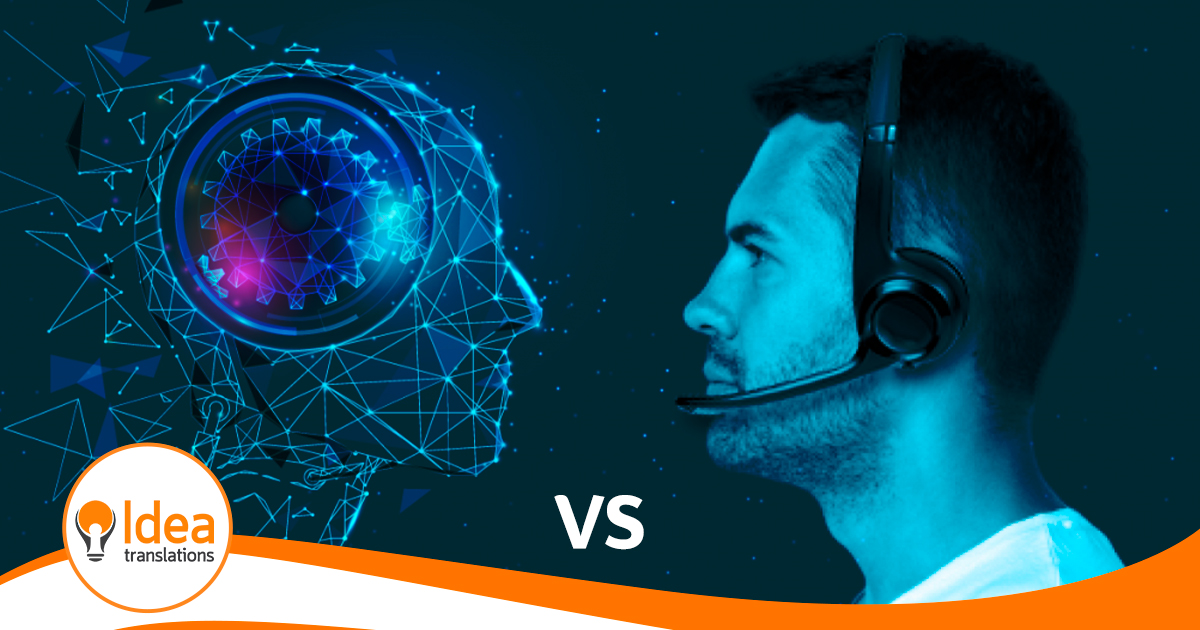
Translation: Between Tradition and New Technologies
Many aspects of day-to-day life are involved in different technologies: shopping online or in brick and mortar stores, making payments at banks or on-the-go from any mobile device, as well as choosing platforms to get together, e.g., FaceTime, Meet, WhatsApp and Zoom.
Hand in hand with these technologies are languages and all their aspects, such as reading, writing and listening. Each one has specific needs that go through the language and even define its application, extension and development. The problem is that these vital tasks are often delegated to artificial intelligence tools, thus leading to inconsistencies and conflicts.
So how can the gap between tradition and novelty be bridged, and what is the difference between human translation and machine translation?
What does “translate” mean?
It’s not just about mastering the ability to convey content in one language into another. Even though it seems like a simple task, it involves many elements where translators make decisions about the literal meaning of each word, the meaning of the text and its purpose. It becomes a bridge between dehumanized and clunky translations and natural sounding text containing human composition taking into account the cultural and social context, its target audience, the grammatical structures, among other factors.
Although its appearance in the educational field dates back to the beginning of the last century, translation is an ancient profession that was involved in the political, cultural, religious, identity and even commercial fields. Therefore, defining it as an academic subject shows the need for professionalizing important knowledge for different societies that require translation to communicate and develop.
Without going into further detail, the Latin-American region has an International Federation of Translators of Latin America (FIT LatAm), which includes countries where Spanish and Portuguese are spoken in Latin America. It currently has 17 members:Argentina, Brazil, Chile, Colombia, Costa Rica, Cuba, Ecuador, Guatemala, Panama, Peru, Uruguay and Venezuela. This entity joined the already-established International Federation of Translators (FIT) in 2003.
21st Century Translation
As a subject, translation today involves discussing different elements: which languages does it involve? What are the different types of translations? And regarding topics, the trends of what is currently translated could be grouped into:
- Youth and children
- Science, technical fields and technology
- Social sciences and humanities
- Economy and finance
- Specialized fields
- Industry
- Miscellaneous manuals
- Social media
- Video and music platforms
- E-commerce
- NGOs, government entities, politics
It is widely known that English is the global language in most goods and services industries. It stands out in the publishing world; a very clear example is Spain. If you compare the statistics in recent years, the trend to publish and translate from English is rising. In fact, according to Statista (2020) this became the most translated language in the book industry in that country (6,400 translations). French ranked second ( 1,500 translations).
Literary translations play a big role in the publishing industry. Some of its benefits are the dissemination of authors, ideas and cultures, in addition to the recovery from crisis and positioning the market in this regard. However, it is essential to achieve quality translations, without losing sight of the importance of making languages with fewer publications and translations global, despite the fact that they have a considerable number of speakers, such as Spanish.
Human Translators Vs. Machine Translation
Many technological innovations create a decline in human need .in some cases automating the entire process making the need for human involvement obsolete. However, machine translation (MT) has actually created more work for translators because of the very unique elements of language that require transmission of emotions, context and unique local terms. MT has made translators more productive and has allowed for an explosion of content translated. MT should be considered a resource and not a competitor, because professionalized human intervention and continuous training are required for the best possible outcome.
There are benefits and drawbacks in any workflow involving translation. The benefits of the human translation are greater precision, creativity, use of one’s own linguistic tools and the possibility of peer review. Its drawbacks? It’s more expensive and requires more time, investment in resources, personnel and training.
As for the latter, the benefits of MT are its low cost, its quick and easy implementation, and it’s almost immediate delivery. The most common mistakes include the incorrect use of terms, untranslated words, redundance, inconsistency, incorrect use of prepositions and verb tenses, unnecessary foreign terms, literal translation and altered punctuation.
The best criteria for hiring translation solutions is, ultimately, to choose a service that offers language expansion, company and project growth through high-quality content, cutting-edge technologies and practices. To this end, considering how to take advantage of the resources to expand and position companies in the international market would be necessary. Refining MT-translated texts goes to show that human translators have the last word.



